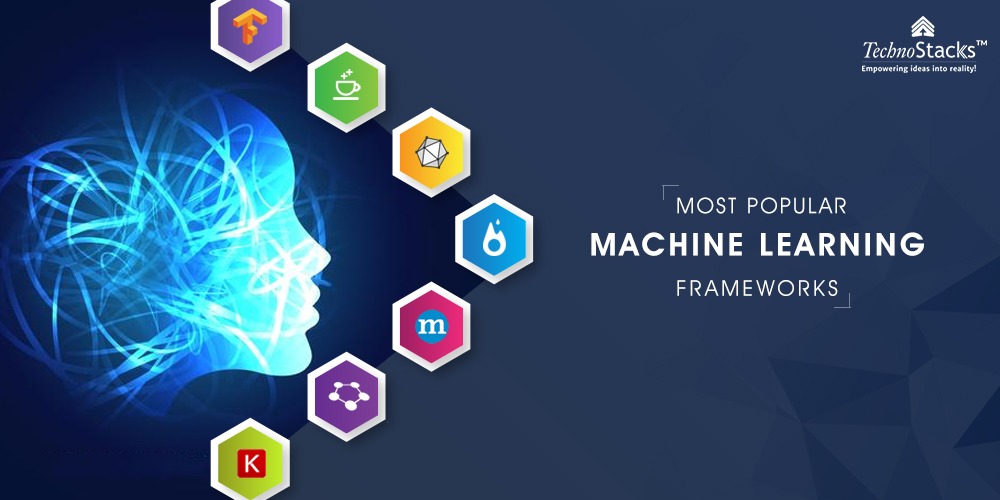Top 7 Frameworks That Have Enhanced Machine Learning
The global view-point of machine learning frameworks is constantly advancing. Artificial intelligence combined with the correct profound learning system has intensified the general size of what organizations can accomplish and get inside their areas. Also, with an ever-increasing number of organizations hoping to scale up their tasks, it has turned out to be indispensable for any organization to assimilate both machine learning and also prescient examination.
Every system here works alternately for various purposes. Here, we will take a quick look at the best Machine Learning Frameworks to give you a superior thought of which method will be the ideal fit or come helpful in understanding your business challenges. And further, help you in creating machine learning applications with frameworks as well as the most popular machine learning frameworks on which the scientists and the developers are working.
-
TensorFlow

Currently, TensorFlow is the top in the list of Machine Learning frameworks. Most developers are using Tensorflow because it has a great support community and many inbuilt features.
It is outstanding amongst other profound learning structures and has been embraced by a few Goliaths, for example, Airbus, Twitter, IBM, and others for the most part because of its exceedingly adaptable framework engineering.
The most outstanding use instance of TensorFlow must be Google Translate combined with capacities, for example, common dialect handling, content arrangement/rundown, discourse/picture/penmanship acknowledgment, anticipating, and labeling.
TensorFlow is accessible on both work area and versatile and furthermore underpins dialects, for example, Python, C++, and R to make profound learning models alongside wrapper libraries.
TensorFlow accompanies diverse instruments that are broadly utilized. TensorBoard is used for compelling information perception of the system demonstrating and executing TensorFlow serving for the quick arrangement of new calculations/tests. Along with that, it holds a similar server engineering and APIs.
It likewise gives coordination to other TensorFlow models, which is unique about traditional practices and can be reached out to serve different model and information composes.
In case you are stepping towards profound learning, it is an easy decision to decide on TensorFlow given that is Python-based, is supported by Google, and comes stacked with precise documentation and walkthroughs to be managed well.
-
Caffe
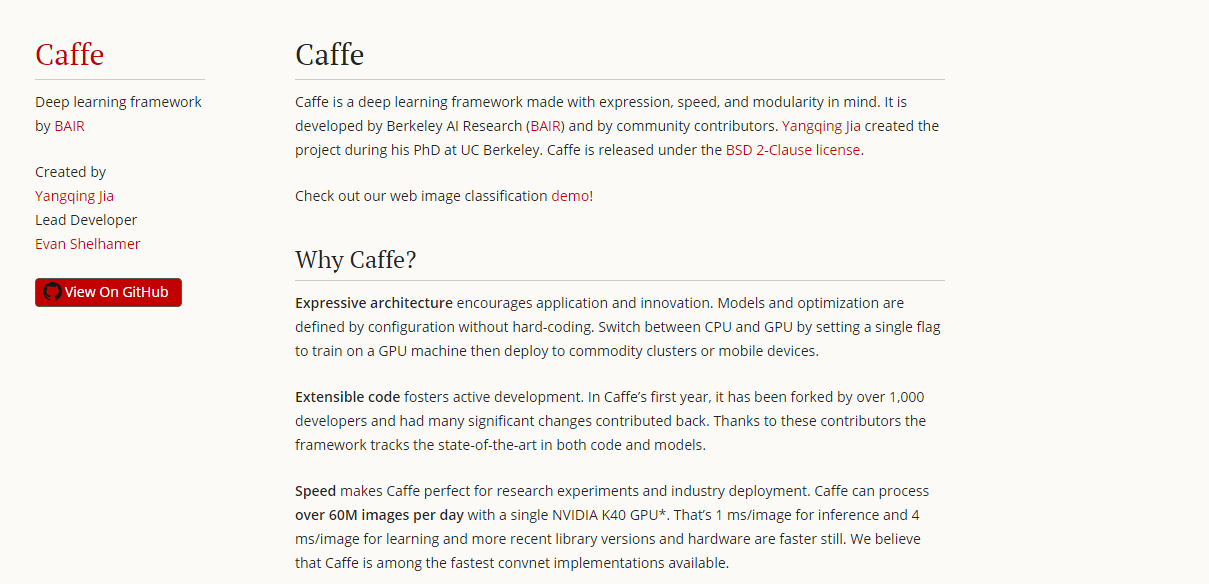
Caffe is a deep learning system that is strengthened with interfaces like C, C++, Python, and MATLAB and also the order line interface.
It is outstanding for its speed and transposability and its pertinence in displaying convolution neural systems (CNN). The most significant advantage of utilizing Caffe’s C++ library (accompanies a Python interface) is the capacity to get to access systems from the profound net archive Caffe Model Zoo that are pre-prepared and can be utilized promptly. With regards to demonstrating CNN’s or illuminating picture handling issues, this ought to be your go-to library.
Caffe’s greatest USP is speed. It can process more than 60 million pictures every day with a solitary Nvidia K40 GPU. That is 1 ms/picture for deduction and 4 ms/picture for learning — and later library adaptations are even quicker.
Caffe is a prominent profound learning system for visual acknowledgment. Not with standing, Caffe does not reinforce fine-granular system layers like those found in TensorFlow or CNTK. Given the design, the general help for broken systems and dialect displaying its very poor, and building up complex layer composes must be done in a low-level dialect.
-
Microsoft Cognitive Toolkit
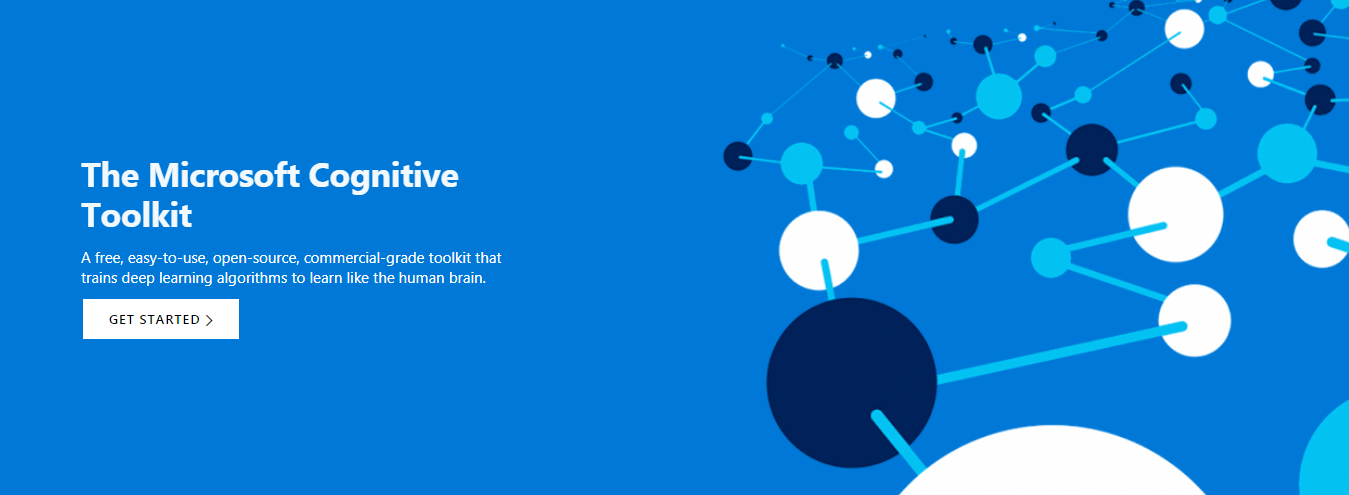
The Microsoft Cognitive Toolkit (beforehand known as CNTK) is an open-source profound learning system to prepare scholarly learning models. The tool is prominently known for simple preparing and the blend of mainstream, which demonstrates crosswise over servers. It performs proficient convolution of neural systems and making for the picture, discourse, and content-based information. Like Caffe, it is supported by interfaces, for example, Python, C++, and the order line interface.
Given its smarter utilization of assets, the usage of fortification learning models or generative ill-disposed systems (GANs) should be possible effectively utilizing this toolbox. It is known to give higher execution levels and adaptability when contrasted with toolboxes like Theano or TensorFlow while working on multiple types of machines.
Contrasted with Caffe, with regards to concocting new complex layer composes, clients don’t have to execute them in a low-level dialect because of the fine granularity of the building squares. The Microsoft Cognitive Toolkit underpins both RNN and CNN sorts of neural models and along these lines is equipped for taking care of pictures, penmanship, and discourse acknowledgment issues. As of now, because of the absence of help on ARM engineering, its capacities on versatile parameters are genuinely restricted.
-
Torch

Torch is a logical figuring structure that offers wide help for machine learning calculations. It is a Lua-based profound learning system and is utilized generally among industry goliaths, for example, Facebook, Twitter, and Google. It utilized CUDA alongside C/C++ libraries for handling and was fundamentally made to scale the creation of building models and give in general adaptability.
Starting late, PyTorch has seen an abnormal state of appropriation inside the profound learning structure network and is viewed as a contender to TensorFlow. PyTorch is fundamentally a port to the Torch penetrating learning system utilized for building profound neural systems and executing tensor calculations that are highly advanced along with their multifaceted nature.
Instead of Torch, PyTorch keeps running on Python, which implies that anybody with an essential comprehension of Python can begin without anyone else’s profound learning models.
Given PyTorch structure’s building style, the whole profound demonstrating process is far more natural and additionally straightforward contrasted with Torch.
-
MXNet
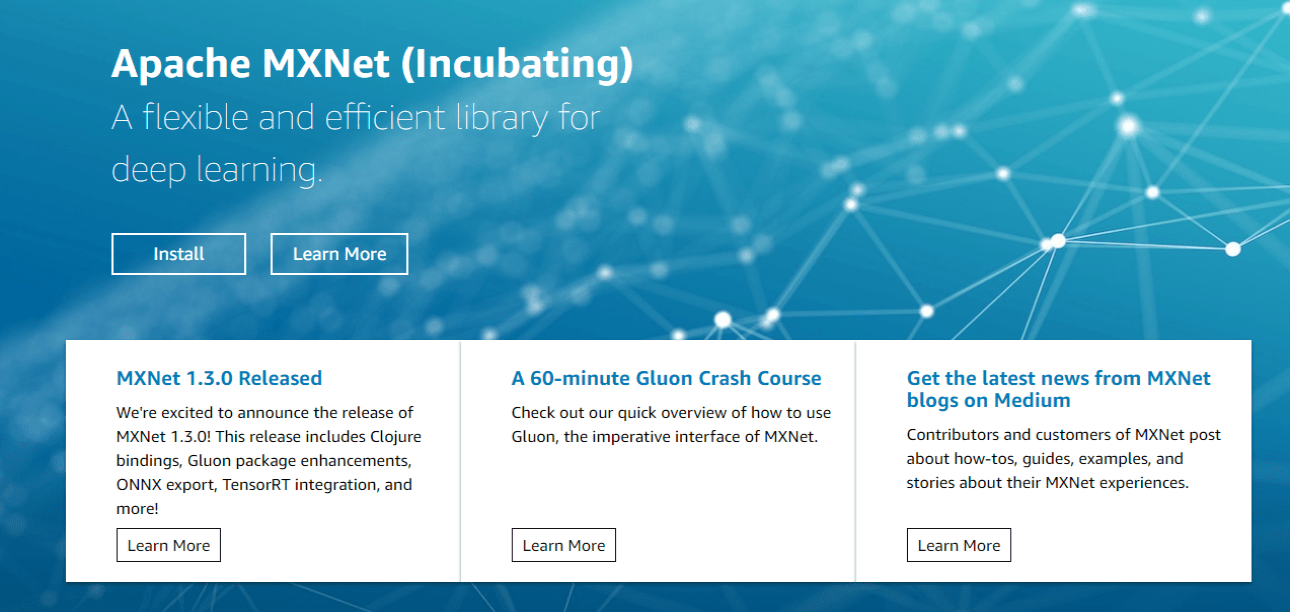
You can’t ignore MXNet when preparing the list of best machine learning Frameworks. MXNet (articulated as blend net) is a profound learning system upheld by Python, R, C++, and Julia.
The brilliance of MXNet is that it enables the client to code in an assortment of programming dialects. This implies you can prepare your profound learning models with whichever dialect you are agreeable in without discovering some new information sans preparation. With the backend written in C++ and CUDA, MXNet can scale and work with a horde of GPUs, which makes it fundamental to endeavors. A valid example: Amazon utilized MXNet as its reference library for profound learning.
MXNet underpins long here, and now a memory (LTSM) organizes alongside both RNNs and CNN’s. This profound learning structure is known for its capacities in imaging, penmanship or discourse acknowledgment, determining, and NLP.
-
Chainer

Exceptionally great, dynamic and intuitive, Chainer is a Python-based profound learning structure for neural systems that are planned by the run procedure. Contrasted with different structures that utilize a similar technique, you can change the systems amid runtime, enabling you to execute discretionary control stream articulations.
Chainer sustains both CUDA calculations alongside multi-GPU. This deep learning system is used principally for assumption investigation, machine interpretation, discourse acknowledgment, and so on utilizing RNNs and CNN’s.
-
Keras
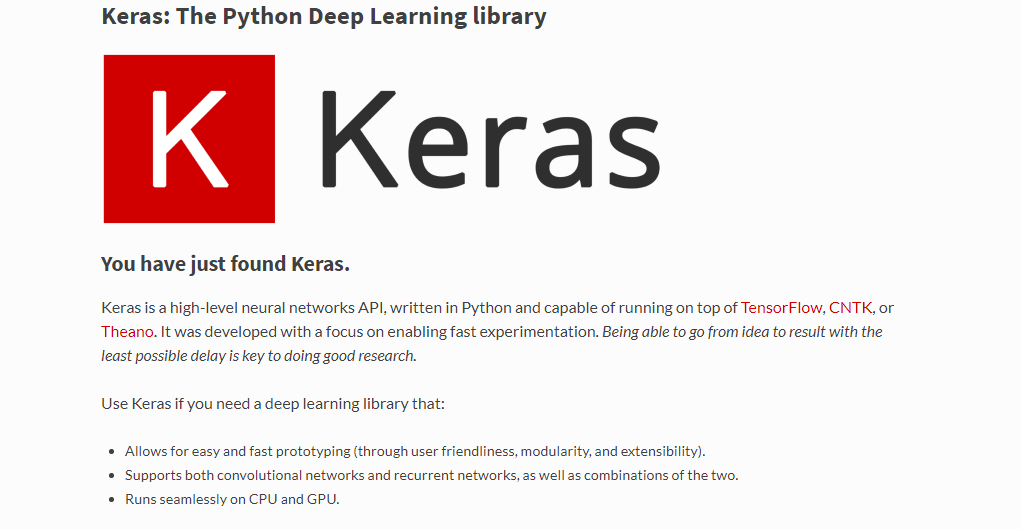
Keras is falling under the category of open source machine learning frameworks Known for being moderate, the Keras neural system library (with a supporting interface of Python) supports both convolution and repetitive systems that are equipped for running on either TensorFlow or Theano. The library is composed in Python and was produced keeping brisk experimentation as its USP.
Because of the way the sensor flow interface is designed it is little bit testing combined with the idea that it is a low-level library that can be many-sided for new clients. Keras was worked out to give a short-sighted interface to the reason for quick prototyping by developing compelling neural systems that can work with TensorFlow.
Lightweight, simple to utilize, and extremely direct with regards to building a profound learning model by stacking various layers: that is Keras more or less. These are the specific reasons why Keras is a piece of TensorFlow’s center API.
The essential use of Keras is in characterization, content age and outline, labeling and interpretation, alongside discourse acknowledgment and the sky is the limit from there. If you happen to be a designer with some involvement in Python and wish to plunge into profound learning, Keras is something you should look at.
Key Takeaways
It is apparent that the approach of profound learning has started with numerous tools who utilize instances of machine learning and human-made reasoning. Separating assignments in the least difficulty of course and with the end goal of helping machines work more productively has been made feasible by insightful learning.
Some of the Machine Learning Frameworks from the above rundown would best suit your business prerequisites? The response to that lies on various variables or on the off chance that you are looking to merely begin, at this point with a Python-based profound learning system like TensorFlow or Chainer.
In case you are searching for something more, at this point with assets like speed and swift utilization alongside the intelligibility of the prepared model you ought to check out all the parameters before choosing a profound learning system for your business needs.
